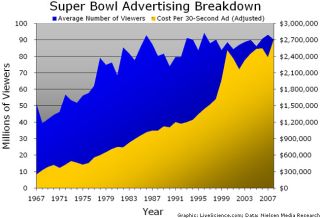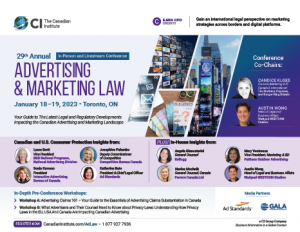
The Food and Drug Administration (FDA) regulates food and drugs in the United States. Its mission is to ensure that the public is safe from dangerous products and protect medical devices and medicines. It is a regulatory body that was established in the beginning of the twentieth century. Its regulations regarding drug advertising remained unchanged until the 1960s.
Although the FDA is an important agency, it is not the only one in the United States that can regulate drug advertising. Many countries in the world have banned or restricted drug commercials.
The FDA doesn't prohibit advertising prescription drugs direct to consumers in the United States. However, all advertisers must follow strict rules. This includes not claiming any specific medical benefits, not exaggerating the side effects, and not giving misleading information. Drug companies must make clear disclosures about all the risks and benefits associated with their products.

Television ads are one of many effective ways for drug companies get people to try their drugs. These ads often feature clever video productions and music that are designed to encourage people to be enthusiastic about the medication. These ads can influence people to purchase expensive medications by urging them to "ask their doctor" about the product.
Merck's Vioxx, an Anti-Inflammatory Drug from Merck, was earning $2.5B in annual sales by 2000. It was promoted in a 60 second spot featuring figure skater Dorothy Hamill. Merck released the drug and the FDA couldn't stop them. Because Merck needed to prove its "substantial" effectiveness, the FDA was unable to stop it.
The American Medical Association (AMA) has been defending drug commercials. They argue they increase the likelihood of people buying expensive medicines, and they encourage people to switch to cheaper brands. Pharmaceutical corporations say that the revenue from these ads helps them continue to develop new medicines, and that they do not want to spend money scaring people off of expensive medicines.
FDA's ad rule has changed. In fact, the agency has relaxed some of its policies, particularly concerning TV ads. Before the study was conducted, the FDA only required companies to disclose certain details when advertising. In order to air an advertisement on television for a specific drug, the drug must give a 1-800 telephone number. Also, the FDA required that ad contain a full list describing potential adverse health effects.

Recent research examined the effects of anti-drug TV ads on middle and high school students. In particular, the researchers investigated the relationship between antidrug commercials on television and drug usage, attitudes toward drug addiction, and beliefs and fears about drug use. The results were different depending on grade.
Middle school students were less likely to recall antidrug ads than high school students. In 1997, there were significantly fewer youth who had been exposed to antidrug television advertisements than 1995. There was also a strong correlation between anti-drug TV advertisements and anti-marijuana-focused antidrug advertising. Additionally, there was strong correlation between the amount anti-drug advertising youth saw and their substance use attitudes.
FAQ
What is the cost of advertising on social media?
You should be aware that social media advertising costs money. You will be charged monthly depending on your time on each platform.
Facebook - $0.10 Per 1,000 Impressions
Twitter - $0.20/1000 impressions (if applicable)
If you send out invitations to Linkedin, $0.30 per 1,000 impressions
Instagram: $0.50 per 1,000 impressions
Snapchat - $0.60 for 1,000 impressions ($0.40 Per User)
YouTube - $0.25 for 1,000 views
Tumblr $0.15 for 1,000 impressions text posts
Pinterest - $0.05 per 1,000 impressions per month
Google+ - $0.15 to $0.0.20 per 1,000,000 impressions
Tumblr $0.15- $0.20 for 100,000 impressions
Vimeo - $0.20-$0.25 per 10,000 impressions
Soundcloud: $0.20-$0.25 Per 1 Million Plays
StumbleUpon - $0.20 -$0.25 per 1 billion pageviews
Digg - $0.20- $0.25 for 1000 diggs
Reddit: $0.20-$0.25 for 1000 comments
Wordpress $0.20-$0.25 per 500 Comments
Flickr - $0.20 -- $0.25 per 5,000 photo uploads
What does it mean to be an advertiser buyer?
Advertisers buy advertising space on television, radio, and print media.
Advertisers pay for the time their message appears.
They do not always look for the best ads, but are looking for the most effective to reach their target audience.
Advertisers might have certain demographic information about potential customers. This could include age, gender income level, marital status and occupation as well as hobbies, interests, and so on.
The advertiser can use this data to determine which medium will work best for them. They may decide that direct mail works better with older people.
Advertisers also check out the competition. If there are similar businesses nearby, they might choose to place their ads near those competitors.
Advertisers should also consider how much money they have available and how long it takes to use it.
What are the basics of print advertising?
Print advertising is a great medium to communicate with customers. Many companies use it to promote products and services. The main goal is to catch the attention and buy from the consumer.
Print ads are typically one page long and include text, images, logos and other graphics. They can also include sound and animation as well video and hyperlinks.
The main types of print advertisements are classified as follows:
1. Brochures - These are large format printed pieces designed to attract people into stores. Brochures can often be adorned with brightly colored images and eye-catching designs.
2. Catalogues- These are smaller versions and variants of brochures. These are typically sent to customers who ask for specific information.
3. Flyers are small pieces or paper distributed at events such concerts and fairs. Flyers can be handed out at retail outlets for a small fee, but are generally free.
4. Posters - These flyers can be larger than the ones you see on the flyer. They are placed on walls, fences, buildings and other surfaces. They are usually made using computer software programs, which is designed to draw the eye of passersby.
5. Direct mail - These are letters or postcards that are sent directly to potential customers. Companies send these out periodically to remind existing customers about their business.
6. Newspaper Ads – These are ads that appear in newspapers or magazines. These are typically quite long and often contain text as well images.
Advertising: What is it?
Advertising is an artistic art form. Advertising is more than selling products. It's about creating emotional connections between people and brands.
Advertising is all about telling stories with images and communicating ideas.
Communication must be clear and persuasive. Your target market should be able to relate to the story you tell.
This makes advertising different from other forms of communication, such as public speaking, writing, or presentations.
A successful ad campaign is a way to establish a brand identity.
This is how you are memorable. People want to remember you.
What is affiliate market?
Affiliate marketing is an internet business model in which you refer customers to other products and services. You get paid by the product owner when someone buys from them.
Referrals are the basis of affiliate marketing. You don't have to do anything special for people to buy from you. You just need to refer them to our website.
You don't have to sell anything. It's equally easy to sell and buy.
Even affiliate accounts can be set up in just minutes.
The more you refer people, the more you'll receive commission.
There are two types affiliates.
-
Affiliates who have their own websites
-
Affiliates that work for companies offering products and services.
What is branding?
Branding is how you convey who you really are and what you believe in. It is how people remember your name.
Branding involves creating an identity that makes your company stand out. A brand is not just a logo but also includes everything from your physical appearance to the tone of voice used by employees.
Because customers know exactly what they are getting, strong brands help them feel confident in purchasing from you. They also feel more confident choosing your products than those from competitors.
Apple is a great example of a brand-named company. Its brand is known worldwide for its sleek design, high-quality products, and customer support.
Apple's brand has become synonymous with technology. Apple is what people associate with when they see a phone or computer.
You should think about creating a brand if you are considering starting a business. This will give you and your business a face.
Why not advertise your business on social media?
Social Media Marketing allows you to reach customers right where they are, via social networks like Facebook, Twitter, LinkedIn and YouTube. You can also target specific audiences within these networks by using keywords.
Because this advertising method costs less online than traditional methods, it's more cost-effective. It also allows you to build strong relationships with your current and potential clients.
It is simple to get started using social media for your business promotion. All you need to get started with social media is a smartphone or a computer, and an internet connection.
Statistics
- It's 100% reliant on your website traffic. (quicksprout.com)
- Advertising's projected distribution for 2017 was 40.4% on TV, 33.3% on digital, 9% on newspapers, 6.9% on magazines, 5.8% outdoor, and 4.3% on radio. (en.wikipedia.org)
- Google will display whichever ad type (CPM or CPC) is expected to earn more revenue for the publisher, which is in Google's best interest since they take a 32% share of the revenue. (quicksprout.com)
- Nonetheless, advertising spending as a share of GDP was slightly lower – about 2.4 percent. (en.wikipedia.org)
External Links
How To
How can you advertise on a billboard
While billboards have existed since the late 1800s they became more popular after World War II, when they were installed along roadsides and highways. Billboards typically contain text advertising, and some also contain photographs or artwork. While most billboards are static, others display messages that change regularly, such as weather forecasts, sports scores, stock prices, and political events.
Billboards most often are found outside, but there are indoor versions. Most outdoor billboards are seen by traffic at least once per day. Indoor ones are only visible once or twice a year. A cubic billboard, which is the most commonly seen type of outdoor billboard, is made up three layers. These include two sheets of glass sandwiched with a layer containing fiberglass mesh. This design allows air movement through the billboard. It is cool in hot weather, and warm when it's cold.
Billboard Advertising Inc. is a company that advertiser pay to have their ads displayed on its billboards. It owns and operates many North America's largest billboard advertising companies. These companies then make space available on billboards for advertisers. These spaces are sold to advertisers depending on the amount they plan to spend on advertising. These advertisers often choose the best location for their ads depending on how many people they are likely to see.
Billboard Advertising Inc. sells advertising space. It also has agreements with local governments to place signs on public property. Some cities allow billboards in any area, while others have restrictions. Chicago, for instance, has a restriction that billboards cannot be more than 1,000 feet from any highway. Other cities also require billboards to be no closer than 500 ft away from schools and churches.
Billboard Advertising Inc. has agreements to promote products and/or services throughout the United States.